IF IT FELT like there was something familiar about the try James Ryan and Dan Leavy created for Leinster against Saracens last weekend, you weren’t mistaken.
The simple one-two between Leavy and Ryan on the edge of an attacking ruck has been something of a mini-trend in the game in recent times, popping up intermittently and employed by several different teams, also sometimes used at the edge of mauls.
Rarely has it been so effective as the superb execution by the Leinster pair, which we looked at earlier this week in a piece on the province’s tries against Sarries, but which we see again below.
Click here if you cannot view the clip above
We detailed how Jordi Murphy’s ruck work helped to stress the Saracens defence here in our article on Leinster’s tries, but the basic defensive error is quite clear.
Juan Figallo, the Saracens defender closest to the ruck, is drawn out to Ryan after Leavy’s initial pass, vacating the space Leavy breaks through.
As we can see above, both Figallo [white] and Jackson Wray [red] are lining up to tackle Ryan, rather than ideally covering one Leinster player each.
The key here for Leinster is dragging Figallo away from the edge of the ruck, in order to create space for the return pass back inside.
Generally, Saracens would hope to have a player folding late from the opposite side of the ruck to cover even if Leavy gets through, but as we indicated earlier this week, Maro Itoje makes a poor decision to counter-ruck and can’t recover in time to stop Leavy.
We get a clear view of Itoje’s actions [he's in the 4 shirt] below.
Click here if you cannot view the clip above
The key from Leinster’s point of view in attack is that Ryan is a viable carrying threat, as has been well established this season but also with his running line here.
Ryan is carrying the ball at Saracens before he passes back inside, where Leavy gleefully accepts the pass and scampers away.
As Brian O’Driscoll mentioned in BT Sport’s live commentary on Sunday, this play is “something that got done to Leinster in the group stages, right here against Exeter in those back-to-back games.”
Indeed, the tactic was evident in the clash between the teams at the Aviva Stadium in December of last year, as Rob Baxter’s intelligent Exeter team looked to find ways to negate Leinster’s stifling linespeed further out the pitch.
As early as the second minute, we see it on the edge of a maul, with scrum-half Nic White and back row Sam Simmonds linking up.
Click here if you cannot view the clip above
The Exeter maul has slowed after an initial shunt and they’re warned to use the ball, sparking White into action.
As White goes to pass to Simmonds, we can see below that Johnny Sexton is lined up to tackle Simmonds [as indicated in red].
Josh van der Flier [7] is Leinster’s first defender on the left edge of the maul and he is initially worried about White darting into that space.
As White passes the ball, however, van der Flier shifts outwards towards Simmonds, as indicated in white below.
That means that as Simmonds takes two steps forward with the ball before swiftly returning the pass back inside to White, van der Flier has vacated that space.
The scrum-half darts into the hole and though van der Flier reacts, he can’t tackle White, while the retreating Robbie Henshaw also falls off the Exeter man.
It’s Leinster hooker Sean Cronin, coming from the far side of the maul [yellow below], who hauls White down from behind – as Itoje couldn’t do with Leavy from a similar position last weekend.
While Leinster manage to belatedly stop White, Exeter are now well onto the front foot inside the Leinster 22 and they score a try on the eighth phase of this attack as their excellent pick-and-jam tactics take over.
In the 18th minute, we get another example of Exeter using the tactic, although from a ruck this time.
Click here if you cannot view the clip above
It’s a fairly familiar situation here, with Cronin the man lining up on Chiefs hooker Luke Cowan-Dickie [red below] and Jack Conan [8] occupying the space close to the ruck.
Generally speaking, Conan’s job here is to hold in that space at the edge of the ruck and we could apply that rule to Figallo in our first example.
The really clever part of this attacking tactic, however, is that Conan – like Figallo – doesn’t see an obvious threat in front of him to accept an inside pass from Cowan-Dickie.
If there was a player lining up just on the inside of Cowan-Dickie before White’s pass, the possibility of an inside pass would be obvious, but the ingenuity of this tactic is that the scrum-half becomes that inside-pass option.
As we can see below, Conan is initially attracted out to Cowan-Dickie [indicated in white] when White passes to the hooker.
However, with Cronin advancing hard on Cowan-Dickie, Conan doesn’t have to engage in that tackle and can instead re-adjust to the inside pass and recover to tackle White.
Exeter have used this tactic on other occasions this season, as have several other teams.
There isn’t too much new in rugby, in truth, with many sides employing similar tactics and plays in their efforts to break defences down.
One of our favourite uses of this tactic was between Aaron Smith and Ben Smith for the All Blacks during last year’s Rugby Championship.
The Smiths have a brilliant combination with both the Highlanders and their national team and this try against Australia back in August of 2017 is a good example.
Click here if you cannot view the clip above
This use of the one-two on the edge of the ruck comes immediately after a big linebreak from the All Blacks and, therefore, the defence is in an even more difficult position.
Wallabies tighthead Allan Alaalatoa [3] has just retreated into the defensive line when Ben Smith pops the ball off the ground to Aaron Smith, luring Alaalatoa towards the scrum-half.
Aaron Smith challenges Alaalatoa’s outside shoulder just to drag him further across before skillfully and fluidly flicking the no-look pass back inside to Ben Smith for the score.
We saw Ireland using the tactic – to less devastating effect, admittedly – during their stunning 41-phase passage in the build-up to Johnny Sexton’s drop goal against France in the recent Grand Slam success.
Click here if you cannot view the clip above
Fergus McFadden links with Ireland scrum-half Conor Murray in this instance and although it doesn’t create a linebreak, it does allow Murray to make a couple of valuable metres after the French defence briefly sits back on their heels when presented with the slightly odd-looking picture.
As we know, every single inch counted in Ireland’s drive towards that memorable drop-goal, so it seems fitting that one of the most incredible passages of the rugby season so far included this clever attacking tactic.
With defences now so aggressive with their linespeed in midfield and further out the pitch, intelligent ploys around the fringes of the rucks and mauls are essential for any attacking team.
The42 is on Instagram! Tap the button below on your phone to follow us!






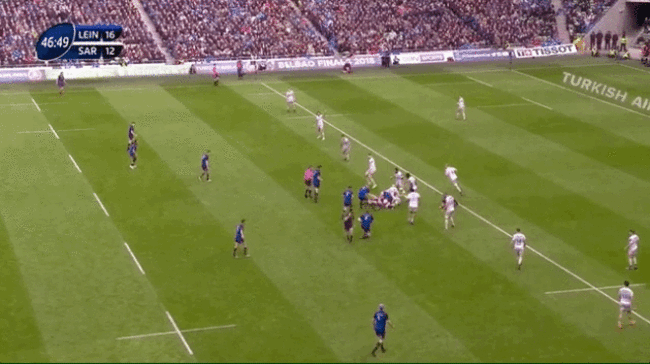
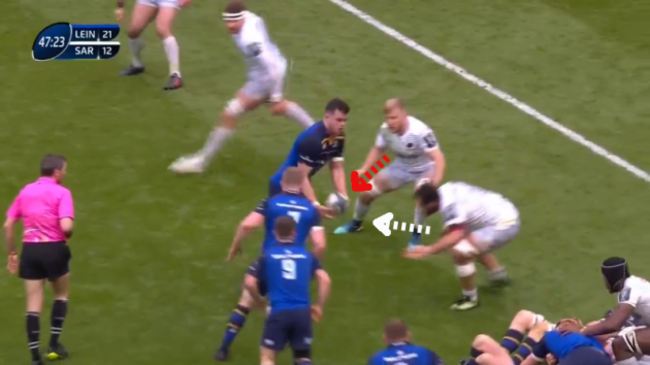
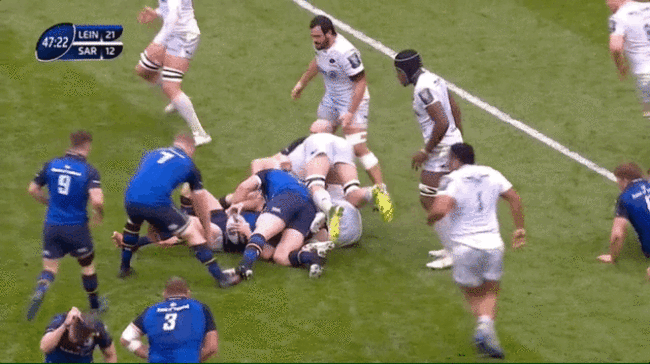
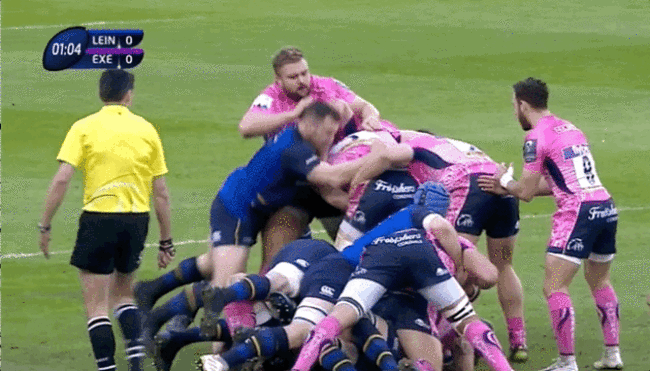
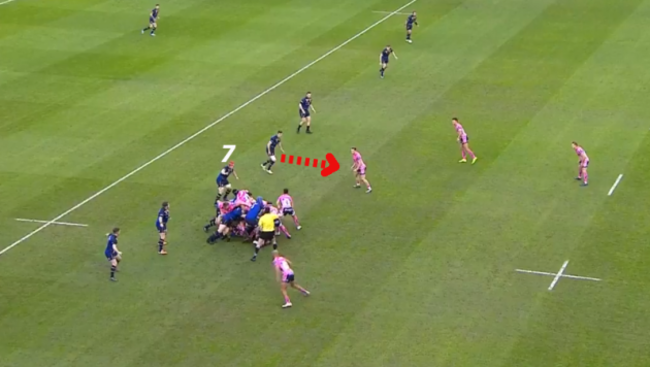
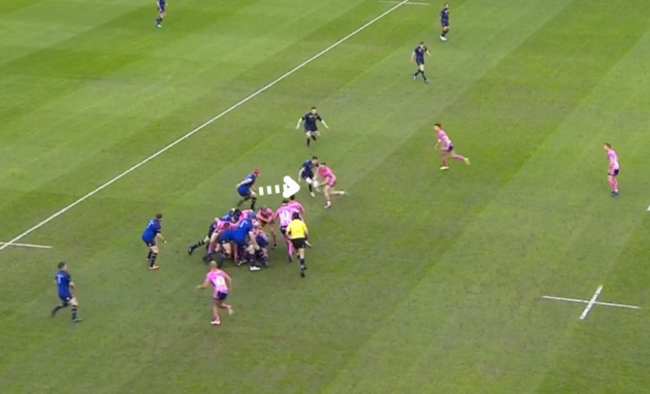
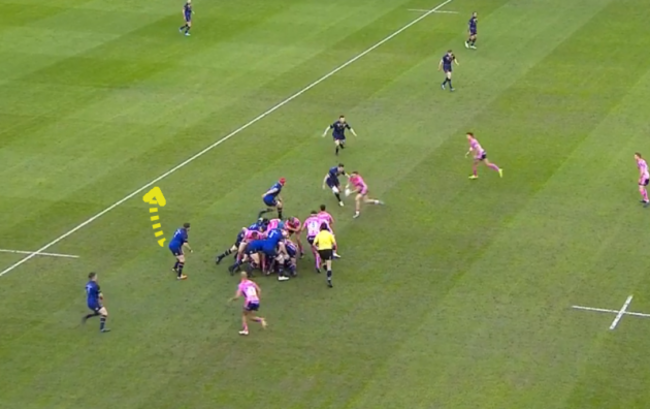

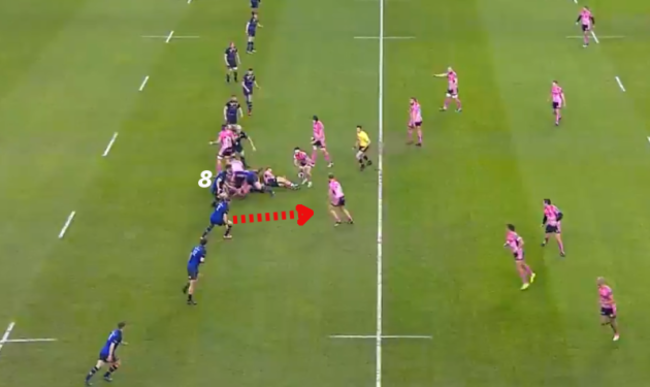
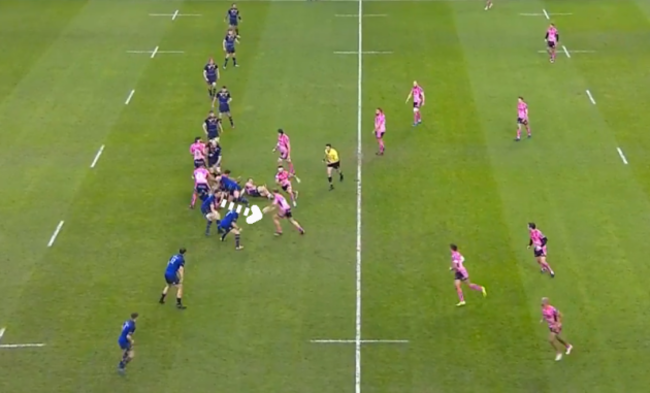
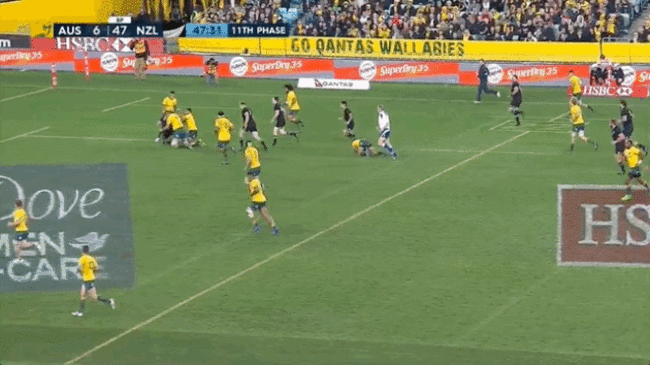
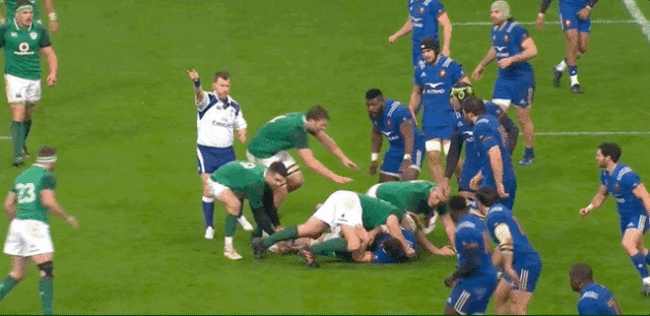




Is he Welsh?
@Trevor Beacom: nope born in England to two Irish parents
Looking forward to John Cooney coming to Ulster. He could surprise a few people if he stays fit and if he gets game time. Paul Marshall really always has been an impact player. It will be interesting to see if he can gel with PJ and how well he can develop.